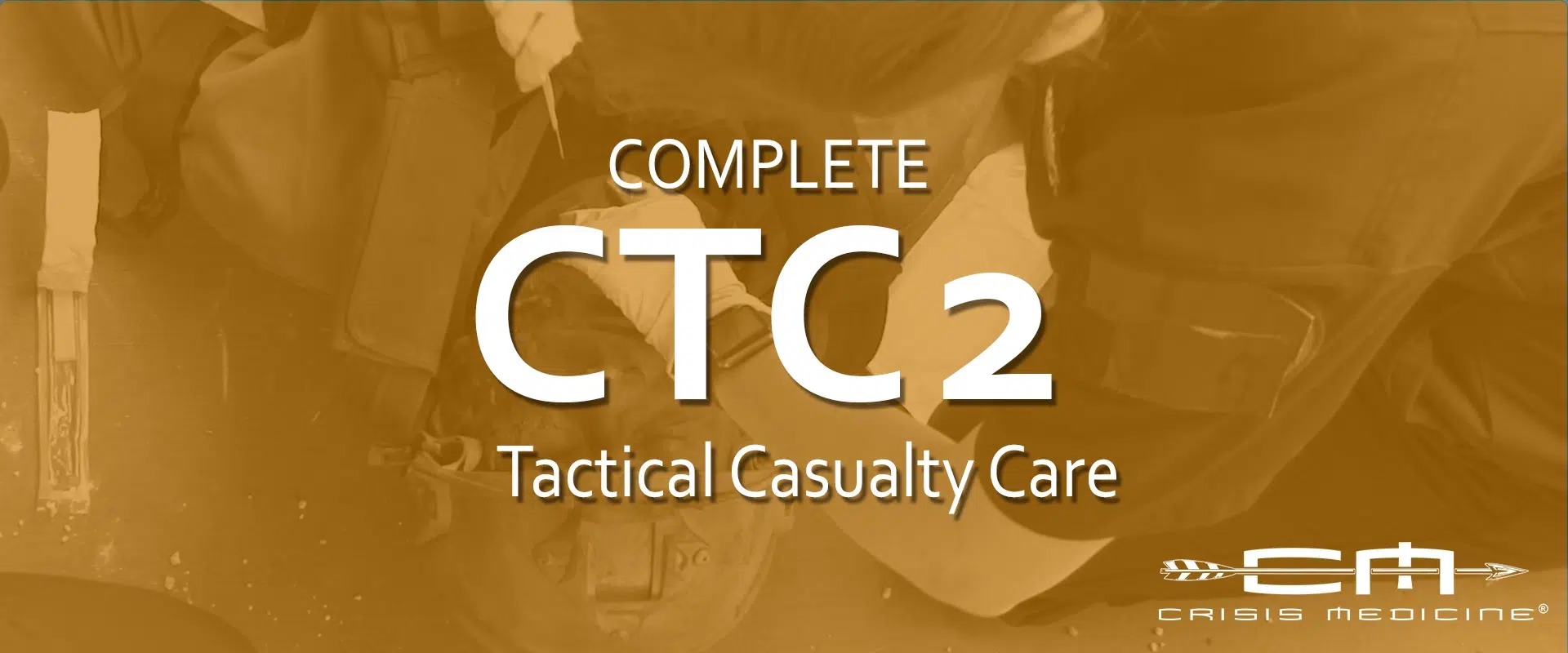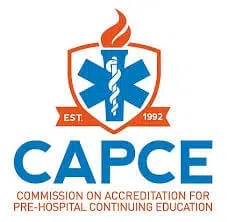Complete Tactical Casualty Care course
This dynamic and practical course covers the complete evaluation and treatment of the tactical casualty during both the Care Under Fire/Direct Threat, Tactical Field Care/Indirect Threat phases, and solid preparation of the casualty for the evacuation phase to increase survivability. Online, self-paced.
This course was designed for the pre-hospital provider or dedicated medic in mind. Skills taught in this course include higher level, paramedic level skills and others may find some taught skills are beyond their scope of practice. Many students have attended with no prior medical knowledge or training, but the course is designed for a student with at least an Emergency Medical Responder background. This course is ideal for the tactical medic, whether in support of military operations, SOF, or tactical law enforcement operations.
This stand-alone course covers all the materials presented in the Advanced Tactical Casualty Care course and builds upon those skills with more detailed airway interventions, surgical airways, intraosseous (and to a lesser extent intravenous) access, fluid resuscitation, TCCC/TECC relevant medications, as well as dedicated litters.
The course uses photographs of actual injuries, diagrams of wounds, and step-by-step demonstrations. The material is presented in an easy to understand, directly applicable way. This class is consistent with current Tactical Combat Casualty Care Guidelines for Medical Providers as well as the Guidelines for Tactical Emergency Casualty Care. If topics are presented in the TCCC or TECC guidelines, they’re presented in this course.
CAPCE accredited CEH awarded upon successful completion.
Want to see an example of the course?
You can see the teaching lecture and skills station for the Foley Catheter Wound Packing technique. This material is excerpted from the Junctional Hemorrhage and Hemostatic lecture and skills stations.
The Complete TC2 course covers everything in the Advanced TC2:
The nature and myths of gunshot wounds and realities of their medical management
How to rapidly evaluate injuries and how they affect your tactical treatment plan
The concept of “care under fire” and how it differs from a non-tactical medical situation
Choosing appropriate medical care for each treatment phase
Assessment and management of penetrating, blunt, and blast injuriesAssessment and management of massive hemorrhage including extensive practical exercises managing all types of hemorrhage, including junctional hemorrhage, effectively packing wounds, and hemostatic agents
The safe and efficient use of improvised and commercially available tourniquets
Basic airway and breathing assessment, as well as management within a high risk environment
Nasal pharyngeal airways and airway positioning
In-depth discussion of thoracic trauma (chest injuries), chest seals, recognition of tension pneumothorax and its decompression
Appropriate treatment of casualties with abdominal injuries or head injuries
Casualty hypothermia prevention
Techniques for moving casualties to a safer location, with detailed training and practice moving casualties efficiently
Triage of multiple casualties and setting up a Casualty Collection Point
Tactical casualty care concepts and their application
And the Complete TC2 Course adds the following topics and skills:
Airway management using nasal pharyngeal airways, airway positioning and surgical airways
Appropriate treatment of casualties with ocular injuries, as well as burns, fractures, and mine injuries
The reality of fluid resuscitation
Intraosseous access, and to a lesser extent intravenous access of the casualty
Using the Hypothermia Prevention and Management Kit (HPMK) and the Blizzard Bag
Proper litter use, including Skedco, Talon, non-rigid, and improvised
Students receive a certificate at the course conclusion indicating they have taken a course based on the TECC/TCCC guidelines and an hourly breakdown by topic. Students who provide State or National registry information will be provided a CAPCE compliant certificate for CEH.
No prior medical knowledge or training is necessary to take this course, but it teaches some skills your state may characterize as paramedic level.
CAPCE Accredited Provider
This CE activity is accredited for 23 Advanced CEH by Crisis Medicine, an organization accredited by the Commission on Accreditation for Prehospital Continuing Education.
Students have 9 months from purchase date to complete the course.
Still not sure? Take a look at our Student’s Experience with CTC2
Course Features
- Lectures 79
- Quizzes 10
- Duration 23 Hours
- Skill level All levels
- Students 626
- Certificate Yes
- Assessments Yes


